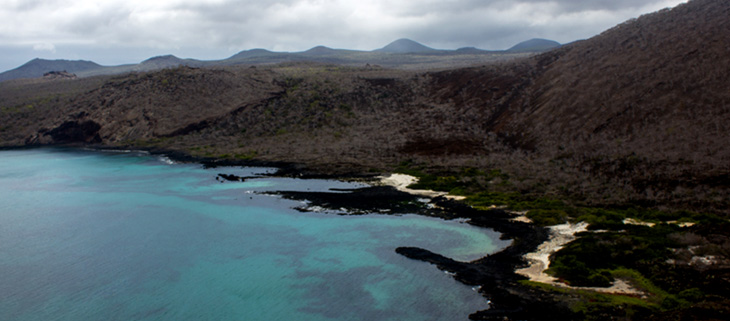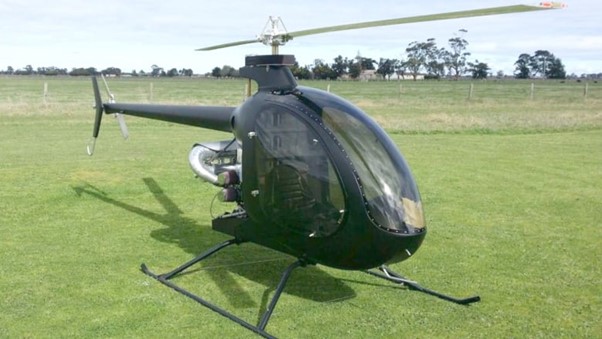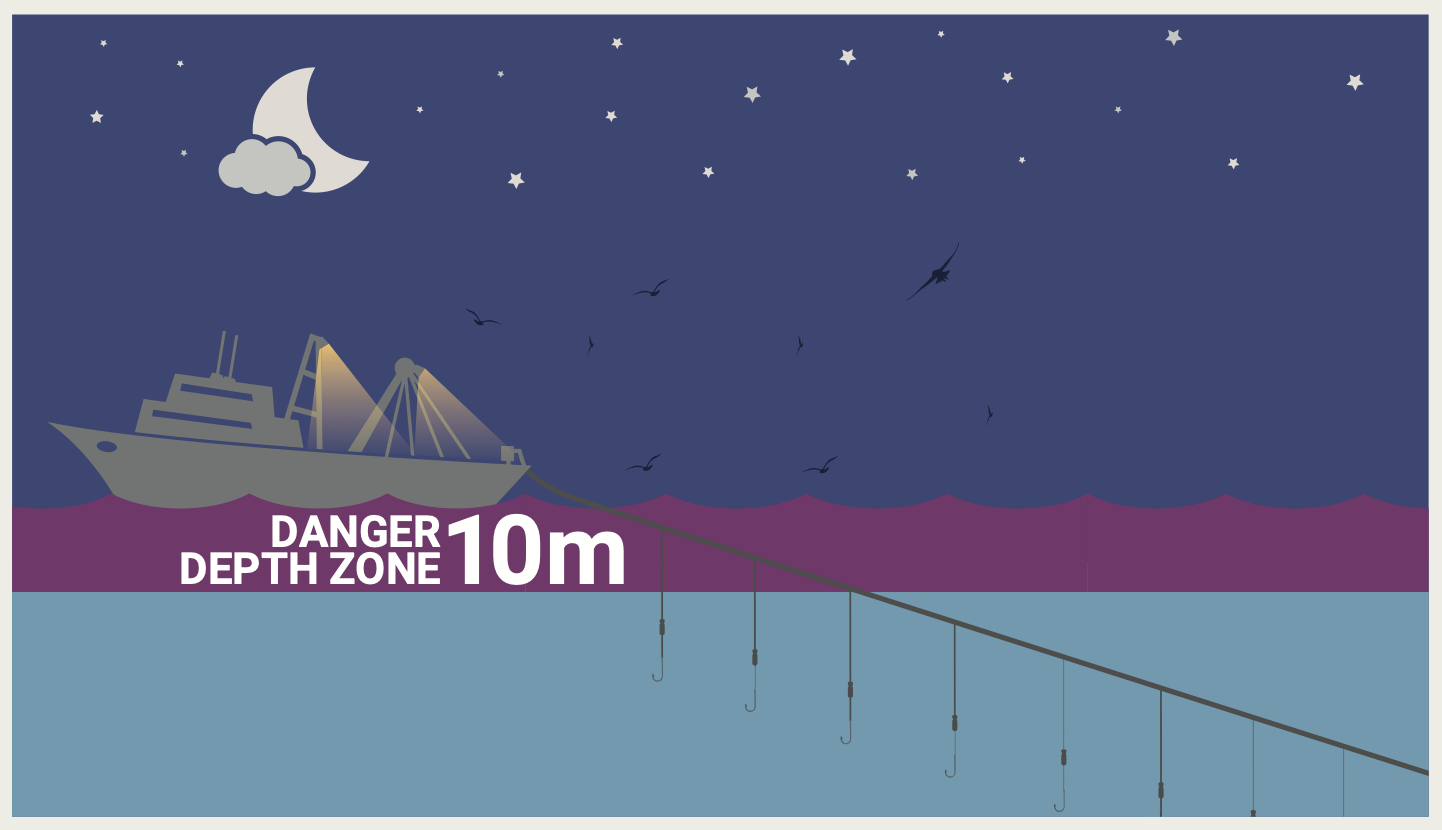
At risk to cats: a breeding Galapagos Petrel in its burrow
Floreana is the sixth largest (at 17 250 ha) of Ecuador’s Galapagos Islands. The island has a population of 160 inhabitants and is an important tourist destination, notably to its historic Post Office Bay. It is also severely impacted by alien species, notably Black Rats Rattus rattus, House Mice Mus musculus and feral cats Felis sylvestris catus.
An example of this impact is for the Critically Endangered Galapagos Petrel Pterodroma phaeopygia which is endemic to the Galapagos Islands, breeding on Floreana, Isabela, San Cristóbal, Santa Cruz and Santiago. Floreana supports over 60% of the species’ global population. One study found almost 50% of Galapagos Petrel nests on Floreana were preyed upon by feral cats (and likely also by Black Rats) despite local control efforts.

A view of Floreana Island; photograph from Island Conservation
After nearly 12 years of planning, the Floreana Ecological Restoration Project has this month commenced restoring Floreana’s many native and endemic species by removing introduced Black Rats, House Mice and feral cats. According to the project’s operational plan the “combination of methods will include aerial- and ground-dispersed toxic rodent and cat baits (resulting in primary and secondary poisoning), trapping, and hunting with and without dogs”. Feral cattle, donkeys, goats and pigs have all previously been removed from Floreana by the Galapagos National Park Directorate.
“Every action has a reaction, and it has been well established that removing invasive species from islands paves the way for ecosystem recovery,” says Chad Hanson, Deputy Vice President Conservation at Island Conservation, and Implementation Advisor for the project. “The vision is for Floreana Island to not only recover but that the community, wildlife, as well as the immediate marine environment thrive as a result of this holistic intervention. As the restoration project moves from imagination to implementation, we’re excited to demonstrate what can be achieved by a community committed to their island home’s well-being.”
On 3 October, two Mosquito ultralight helicopters, adapted to be able to fly unmanned with suspended spreader buckets each able to lift 130-180 kg, began dispersing cereal bait pellets containing the rodenticide brodifacoum at predetermined transects from low altitude to ensure precise distribution over the island. Flights are scheduled to continue through the night. Both the use of unmanned helicopters and night baiting are thought to be novel for an island eradication. The initial bait application is set to span 10 days, covering the entire island, including its coastal cliffs. Three spaced applications are planned to achieve eradication. Aerial baiting targeting cats will commence using meat-based “sausages” containing Para-aminopropiophenone (PAPP) thereafter, scheduled for three applications using the Mosquito helicopters during daylight hours only. This is scheduled to continue until mid-December 2023. Ground baiting against rodents by hand-broadcasting and use of bait stations will occur in selected localities, such as around buildings, freshwater ponds, livestock pens, and in known caves and lava tunnels. Cage and leg-hold traps will also be used to target cats.

A Mosquito ultralight helicopter
“The Floreana Ecological Restoration Project represents the most significant endeavour in the history of the Galapagos National Park. Its success [will symbolize] a global conservation milestone that exemplifies the synergy between conservation and sustainable development, serving as an inspiring model for protected areas worldwide,” emphasized José Antonio Dávalos, the Ecuadorian Minister of Environment, Water, and Ecological Transition.

A Giant Tortoise on Floreana; photograph from Island Conservation
Once free of rodents and cats the project partners plan to reintroduce twelve locally extinct species to the island, phased over at least seven years and commencing with hybrid individuals of the Floreana Giant Tortoise Chelonoidis niger niger in early 2024. Reintroduction of terrestrial birds and a snake are set to follow as the island’s ecosystem recovers.
The Floreana Ecological Restoration Project is directed by the Ecuador Ministry of Environment, through the Galapagos National Park Directorate, in collaboration with the Floreana community and Agency for Biosecurity for Galapagos. It is being executed in collaboration with Fundación de Conservación Jocotoco (Jocotoco Conservation Foundation) and Island Conservation. The project is part of the Island-Ocean Connection Challenge, an ambitious campaign to restore 40 globally significant islands from ridge-to-reef by 2030. Read the complete media release on project initiation by Island Conservation here.
References:
Cruz, J.B. & Cruz, F. 1987. Conservation of the Dark-rumped Petrel Pterodroma phaeopygia in the Galápagos Islands, Ecuador. Biological Conservation 42: 303-311.
Hanson, C. & Campbell, K. 2013. Floreana Island Ecological Restoration: Rodent and Cat Eradication Feasibility Analysis. Santa Cruz: Island Conservation. 85 pp.
Hanson, C. & Campbell, K. 2020. Floreana Island Ecological Restoration: Rodent and Cat Eradication Operational Plan. Puerto Ayora: Island Conservation and Galapagos National Park Directorate. 93 pp.
John Cooper, Emeritus Information Officer, Agreement on the Conservation of Albatrosses and Petrels, 17 October 2023


 English
English  Français
Français  Español
Español 


 An image from ACAP's Night-setting Factsheet - available to download at the ACAP website under Resources. According to the research undertaken by The Navigators, fishers agreed that setting at night was an effective seabird bycatch mitigation measure
An image from ACAP's Night-setting Factsheet - available to download at the ACAP website under Resources. According to the research undertaken by The Navigators, fishers agreed that setting at night was an effective seabird bycatch mitigation measure



 A Southern Giant Petrel takes flight; photograph by Trevor Hardaker
A Southern Giant Petrel takes flight; photograph by Trevor Hardaker